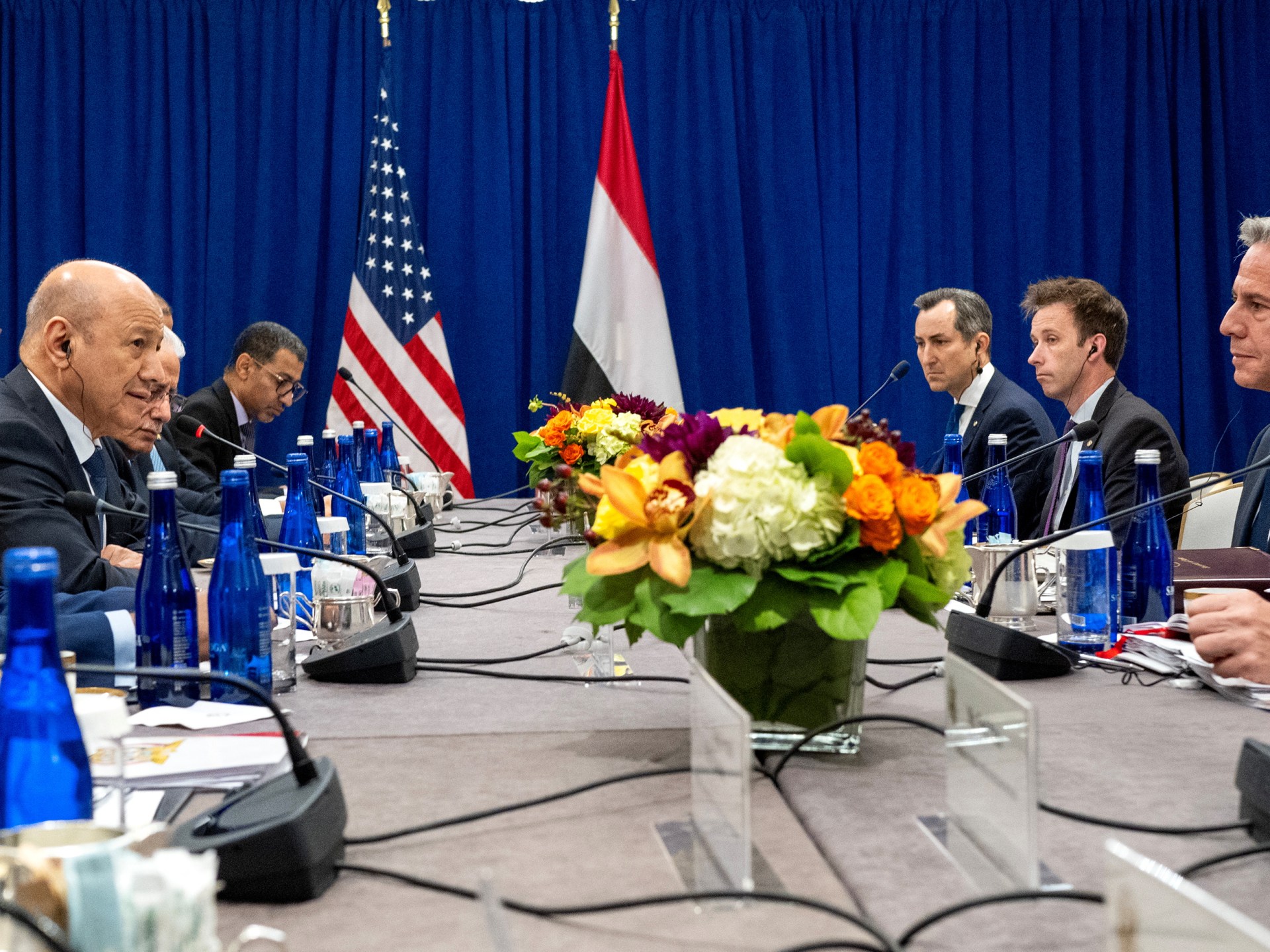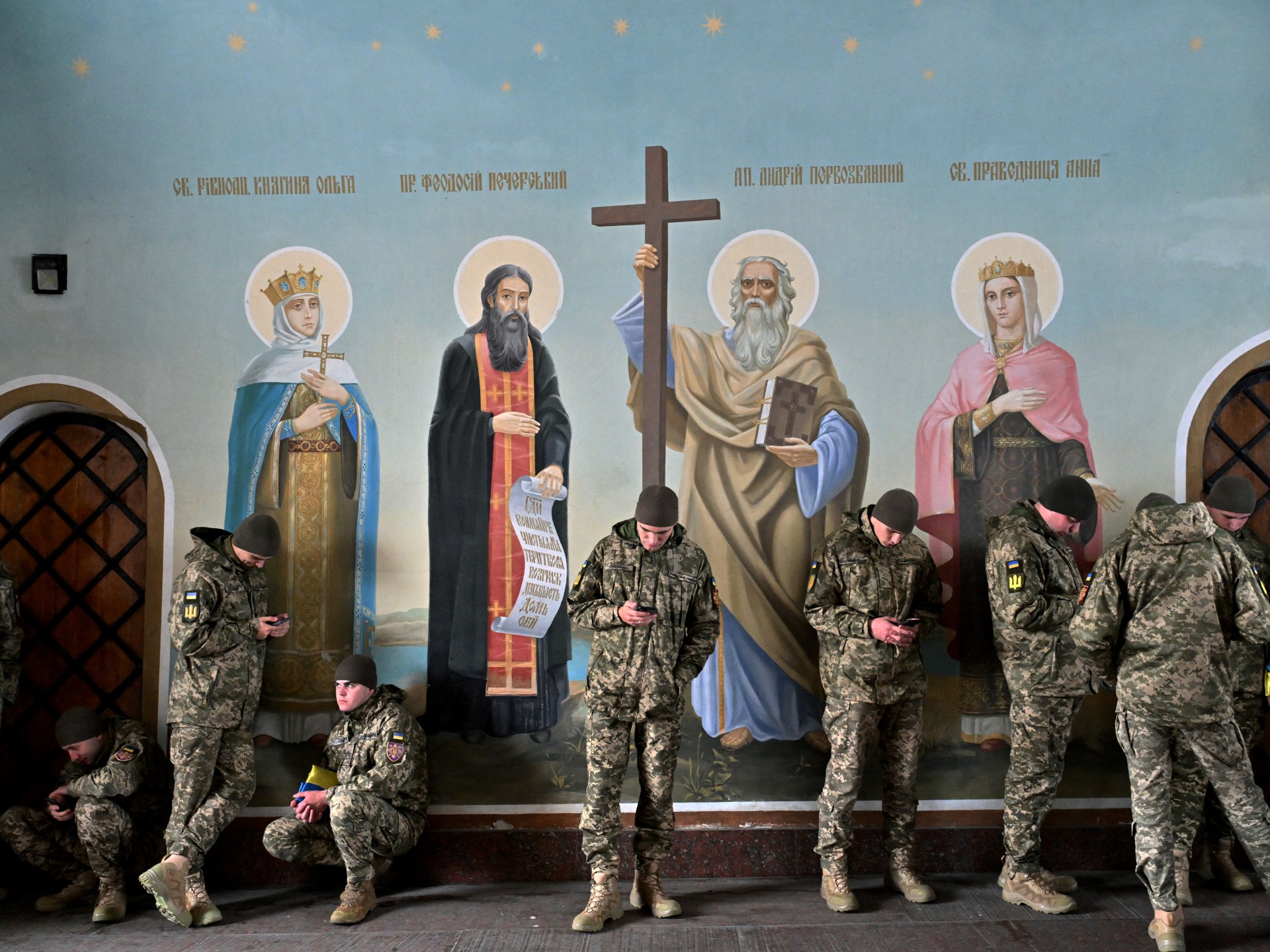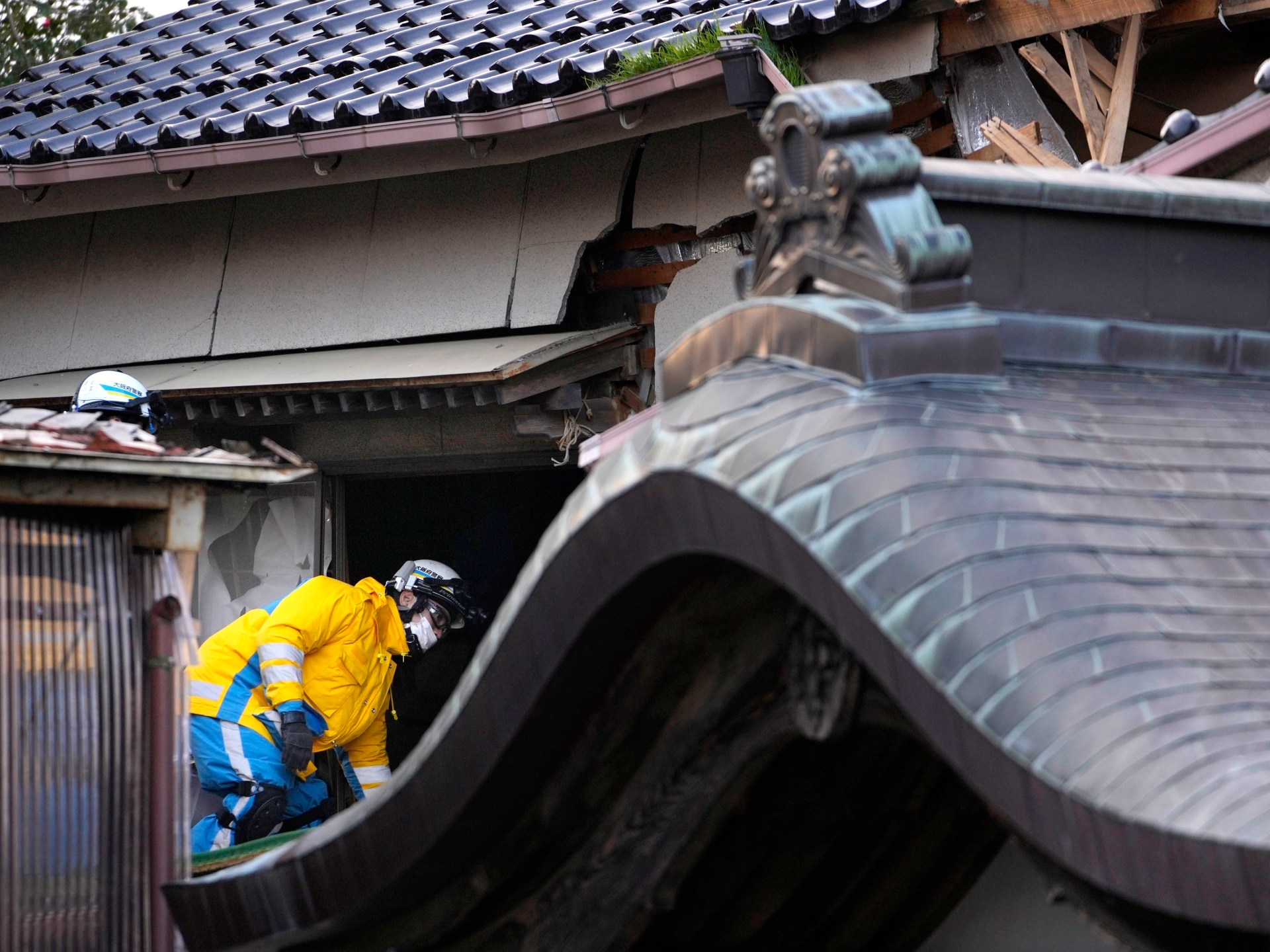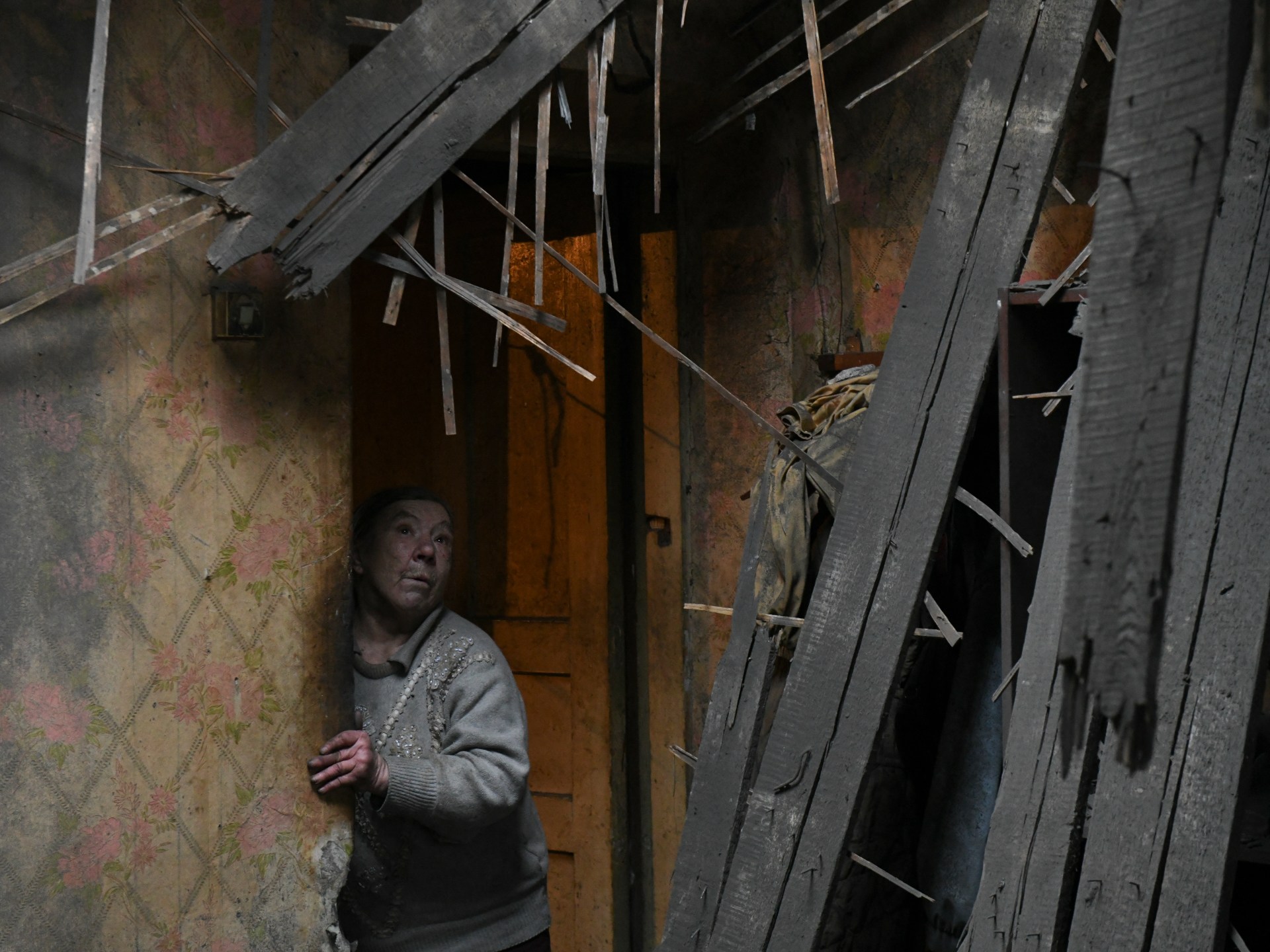
Beirut, Lebanon – The Houthisthe most prominent group in Yemen, saw its popularity soar in the region after its attacks on Israeli-linked ships in the Red Sea threatened to disrupt a key global sea route.
In the last few weeks the A group linked to Iran mobilized hundreds of thousands of people to the streets of the Yemeni capital Sanaa to hold rallies in support of Gaza on Friday. Internationally, the group’s profile has grown after it fell victim to US and UK airstrikes for disrupting shipping in the Red Sea. According to her, this action is in support of the Palestinians who are suffering from Israeli aggression in the Gaza Strip.
But the Houthis are not the only force in Yemen; In fact, they are not the internationally recognized government of Yemen.
How did the Houthis gain notoriety?
In September 2014, the Houthis overran and captured Sanaa large parts of the countrywhich forced then-President Abd-Rabbu Mansour Hadi to flee.
In March 2015, a nine-country coalition led by Saudi Arabia intervened on behalf of the Hadi government. This war plunged Yemen into what the United Nations called “the world’s worst humanitarian crisis.”
A ceasefire on April 2, 2022 silenced the guns. Today the Houthis control most of western Yemen.
The Presidential Leadership Council
Five days after the ceasefire, Hadi resigned and handed over his authority to the Presidential Leadership Council (PLC), an eight-member council that included several prominent Yemeni figures.
The PLC, backed by Saudi Arabia and the United Arab Emirates, is the main counterweight to the Houthis in Yemen.
“The aim was to use this advice [PLC] to engage with the Houthis either militarily or through negotiations,” Raiman al-Hamdani, a Yemen researcher at ARK Group, told Al Jazeera.
“Furthermore, the PLC provides legitimacy to various armed groups that have operated without formally falling under government command.”
But the PLC union is an organization that opposes the Houthis, and there are many competing and sometimes irreconcilable differences within the group.
“The PLC rarely reaches a unanimous agreement,” said al-Hamdani, “often needing advice from its foreign supporters on the best position to take.”
So who are the groups that make up the PLC?
The Southern Transitional Council
Maj. Gen. Aidarus al-Zoubaidi, a former governor of Yemen’s second-largest city, Aden, is the leader of the 26-member STC and sits on the PLC.
Other members of the STC include ministers and governors from southern Yemen.
Their armed forces are supported by the United Arab Emirates, such as Abdullah Baabood wrote for the Malcolm H. Kerr Carnegie Middle East Center.
It currently controls southwest Yemen but has larger ambitions – including secessionist goals for southern Yemen. “They want all of old South Yemen,” Yemen analyst Nicholas Brumfield told Al Jazeera, referring to South Yemen, which was merged with the north in 1990.
“Whenever there has been a lull in fighting with the Houthis in recent years, the main story in Yemen has been the STC’s fight with the Yemeni government or al-Islah [an Islamist group that dominated the Yemeni government until 2019] to try to take East Yemen.”
But the STC is trying to curb its secessionist goals in order to combat the Houthis and maintain regional support.
The Giants Brigades
Also known as the Southern Giants Brigades or “al-Amaliqah,” it is a pro-government armed group made up primarily of southern Yemeni tribesmen who also pursue separatist goals for the south.
The group consists of more than 15,000 fighters led by Abd al-Rahman Abu Zaraa Al-Muharramii. Yemen experts believe it is supported by the United Arab Emirates.
They are particularly active in the Taiz governorate north of Aden.
Saleh and the Guardians of the Republic
Late President Ali Abdullah Saleh’s nephew, Tariq Saleh, controls a group known as the Guardians of the Republic. His troops include former special forces who were close to his uncle.
According to Baabood, Saleh is also supported by the United Arab Emirates and its troops is said to have received training at an Emirati military base in Assab, Eritrea.
They are based in al-Makha (Mocha) on the west coast.
Al Islah
“[Al-Islah] are an Islamist group and dominated the internationally recognized government for most of the conflict until 2019,” al-Hamdani said. Two members of al-Islah, which Yemen experts believe is backed by Saudi Arabia, sit on the PLC.
The first is Sultan Ali al-Arada, governor of Marib – an area where the Houthis are fielding troops.
The second is Abdullah al-Alimi Bawazeer, who was close to Hadi.
Al-Islah has previously clashed with many members of the PLC, including the STC.
“The cities in the north that are controlled by the government [Marib, Taiz] are Islah-dominated. In the south, the UAE has largely driven them out,” al-Hamdani added.
Individual members
Other members include their leader Rashad al-Alimi, the Saada tribal leader and lawmaker Othman Hussein Majali; and Faraj Salmin al-Bahsani, the former governor of eastern Yemen’s Hadramout and a former military officer.
Will the Houthis be able to withstand the PLC?
After years of fighting, the Houthis’ initially rudimentary military capabilities have become more sophisticated. At the same time, the PLC is not fully unified and internal disagreements among its members have played into the Houthis’ hands.
Members have conflicting ambitions and ideologies and prior to the PLC’s founding in 2022, some experienced military clashes. These divisions have allowed the Houthis to maintain control of key areas and present themselves as a legitimate actor in ceasefire negotiations with Riyadh.
Its arsenal consists of a mix of Iranian sniper rifles, AK-47 assault rifles from China and Russia, and rocket-propelled grenades built in Bulgaria and North Korea. “Most of their weapons are of Russian, Chinese or Iranian origin, but North Korean weapons and those manufactured in former Warsaw Pact countries are also present in the arsenal,” said NR Jenzen-Jones, the director of the Australia-based Armaments Research Services , told Voice of America.
International parties are fighting against the Houthis
The two main regional players fighting the Houthis are Saudi Arabia and the United Arab Emirates. Both groups support the PLC but are allied with different forces within the coalition.
The UAE has supported the STC as well as other PLC members including the Giants Brigades and Saleh. Both Saleh and the STC have “vocally expressed their critical role in preventing the Houthis’ attacks.” [on shipping vessels in the Red Sea]said Brumfield.
Saudi Arabia threw its weight behind figures who wanted a united Yemen in the PLC, including Chairman al-Alimi and al-Islah, who have two members on the PLC board.
The Saudis “want to avoid being remembered for dividing Yemen,” al-Hamdani said. A point of contention between Saudi Arabia and the United Arab Emirates arose when the STC threatened to move into the area along the porous border between Yemen and Saudi Arabia, where most of Yemen’s oil production takes place. “The Saudis are very protective and don’t want anyone, even the Emiratis, to have a group that controls the Yemeni side,” Brumfield said.
However, Brumfield said, these disagreements appear to have cooled in recent months as “the UAE appears to have realized that Yemen is simply much more important to Saudi Arabia than it is to them.”
However, this importance does not mean that they want to stay in the country indefinitely, he added. “Saudi Arabia is really desperate to get out of Yemen.”






Recent Comments